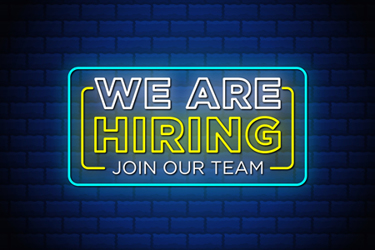Hire Your CTO Now, Then Get Help At Your CDMO

By Louis Garguilo, Chief Editor, Outsourced Pharma

We last left our exposé on the pressurized roles for Chief Technology Officers in today’s biopharma organizations by posing three questions:
- Can partnering CDMOs help the CTO in his or her increasingly difficult position?
- When and who should you hire as your CTO?
- How can CTOs become the new leaders that organizations need?
Here we tackle the first two, before separately diving into the third.
No Better Time Than Now

Drug research, development, and manufacturing overlap like the foldings of an origami crane.
In fact, if you’ve ever watched an experienced crane-creator, the pace at which the creation comes together is rather breathtaking. You’ve got to think folds ahead, and visualize the completed process.
So it is for drug and therapy sponsors in the year 2022. In these pages of Outsourced Pharma, for example, we are constantly counseled on preparing for phase three while in early development.
Failure may rear its ugly head along the way, but you give it a better opportunity if you aren’t planning for ultimate outcomes.
Meaning within the framework of our current discourse:
The time to hire a CTO is most always, “Now.’
“The CTO needs to come on board your organization early, especially when you think of the increased complexity of new science and the processes required,” says Peter Gallagher, a leadership consultant at Egon Zehnder focused on helping CTOs excel.
“Add that potential speed from R&D to clinical material, to preparing for and then launching commercially, and you need someone understanding, and covering that entire continuum."
Gallagher says the CTO probably won't be the second or third hire for a company advancing a new science. “However, the sooner they come in to help and start owning the ‘line-of-sight’ from development and scale up to what ultimate success looks like, the better.”
The Challenge Of Now
With this growth in relative importance to the entire biopharma’s operation, I for one couldn’t imagine hiring anyone for my CTO position who did not have prior experience.
“It’s interesting you say that,” says Gallagher, “because in the general market for talent, CTOs are in exceptionally high demand. But to pull a sitting CTO out of their current company is very challenging.”
He explains:
“These leaders are anything but job hoppers. They come in and want to build the heart of the company. They put the pieces together to go from R&D through the “black box of CMC,” to drive a new molecule or therapy out to market. This isn't a short-term fix for them. We tend to see longer tenures for CTOs.”
This holds pat, Gallagher adds, whether you decide to investment in your own facility, or have invested instead in building trusted relationships with CDMOs and other partners in an outsourcing model: “CTOs simply tend to stay put.’’
My originating point, though, remains: a CTO-hiring biopharma would not want to promote or bring in an individual without extensive experience, particularly working with CDMOs.
This time, Gallagher agrees. “The importance of understanding how to work across a range of relationships outside of your company is critical to overall success.”
“There will often be some capability you don't have in-house, or maybe you don't invest in because it’s not core to your process. Being able to fully appreciate how a partner can fit that critical piece of the CMC puzzle for you is an important attribute for the CTOs.”
There’s no time for training once aboard the outsourcing development train. But there is help.
Outside Help
How might a partnering CDMO help its client’s CTO succeed?
“Have empathy and an appreciation of where that CTO and their CMC team is coming from,” replies Gallagher.
“It’s where you see the difference in cultures, systems, and processes play out between the CDMO and biopharma company –particularly when cultures are not well aligned."
“This is a subjective piece,” he continues. “It can’t be delineated in a spreadsheet or your quality agreement. Both the CDMO leads and the CTO benefit when both sides learn to optimally align their values, behaviors, and way of working."
Moreover, Gallagher points out, “CDMOs should view their empathy as a competitive advantage – the ability to align and reflect their client's culture is fundamentally important.”
I point out to Gallagher that it is, though, important to recognize there is no exacting counterpart ‘CTO’ at the CDMO to interface with.
And thus, says Gallagher, he and his colleagues at Egon Zehnder spend a lot of time talking to CDMOs about the importance of a “B2B mindset,” and how to “really get into the shoes and mindset of their clients.”
That’s nice to hear, but I wonder.
How can a CDMO be this more ideal partner when in reality they are dealing with their own set(s) of challenges – foremost the pressures to do more and do it faster, and simply to keep up with evolving science and technology in developing and manufacturing advanced products and therapies.
“CDMO leadership is actually well-prepared to meet the CTO where he or she is at,” Gallagher quickly counters.
“These leaders have a unique and well-diversified skill set crossing the technical and the commercial boundaries. By the nature of their organization’s business model, they need to think ‘multi-dimensionally.’
“They deliver technical solutions, but they also manage and understand complex P&Ls, where a slip-up in a timeline or compliance shortfall could have far-reaching impact on business performance.
“CDMO leaders do know the importance of understanding their customer, and finding common ground for partnership,’’ he avers, and adds:
“Again, I think it’s a competitive advantage for the CDMO as an organization, and individuals, to really think about where the client’s CTO is coming from, and what he or she needs to succeed at their job."
Where else can a CTO look for assistance?
One answer is in leadership training.
The training to become the professionals their companies need them to be. We’ll look at that and more in a final installment.
